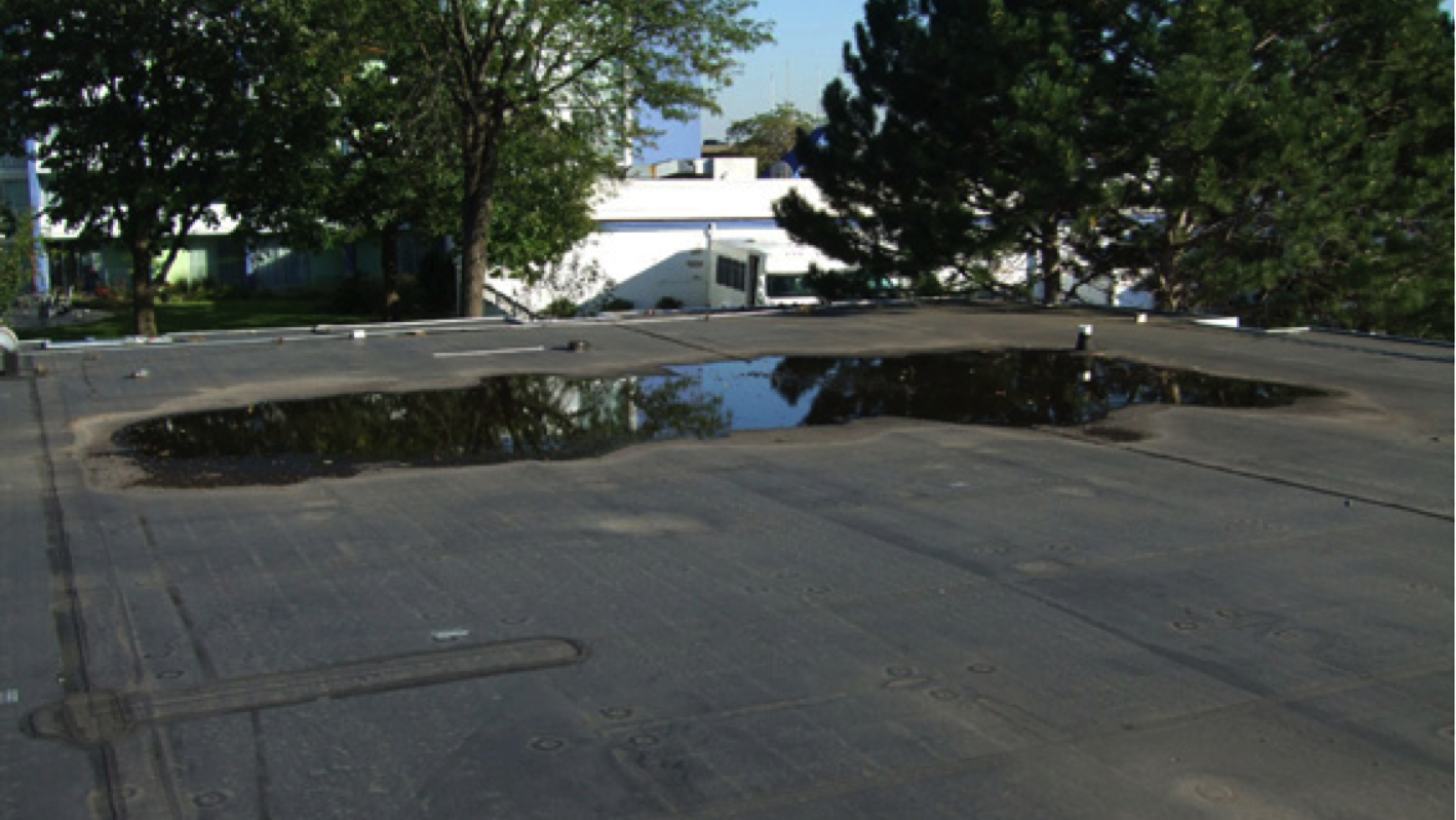Have you ever heard the phrase, “when it rains, it pours?” This is a common saying used to allude to when life gets overwhelming with stress and tasks. But what if that phrase was taken literally–in this case, when it rains, figuratively speaking, there’s actual flooding happening on your roof? If ponding water has been building up on the flat surface of your roof after recent rainstorms, you may be wondering if this is normal and how best to address the situation. In this post, we’ll discuss how to address water ponding on a flat roof. Keep reading to learn more.
Contents
What Causes Ponding On A Flat Roof
1. Poor roof drainage: Improper sloping and inadequate drainage can cause water to accumulate on a flat roof. If the slope is not sufficient, the water will have nowhere to go and will pool on the roof.
2. Clogged drains: Even with a proper slope, if the drainage system is blocked or clogged, water will not be able to drain off the roof properly. This will result in standing water on the roof.
3. Poor quality installation: If a roof is installed with poor workmanship, it can cause the roof to accumulate water. This could be due to improper use of sealants, poor installation of drains, or not using the right materials.
4. Weather conditions: Excessive rain or hail can overwhelm a roof’s drainage system and cause ponding. If the roof cannot handle large amounts of water, then it will become saturated, and water will begin to pool.
5. Poor maintenance: If a flat roof does not get proper maintenance and is left unrepaired, it is more likely to pool water. Regular inspections and maintenance can help prevent this problem. An unmaintained flat roof is more prone to water ponding.
6. Poor design: If a flat roof was designed with inadequate drainage, insufficient slope, or an improper pitch, it can cause water to collect and result in ponding. Poor roof design can be one of the major causes of water pooling on a flat roof.
How To Address Ponding On A Flat Roof
Ponding on a flat roof is caused by an accumulation of water that doesn’t properly drain off. This can result in structural damage over time, including rot and mold growth, as well as potential leaks. To prevent this from happening, you should take steps to address ponding on your flat roof.
Diagnose
The first step to addressing ponding on a flat roof is to determine the source of the issue. If it’s due to clogged drains or blocked gutters, these need to be cleared out; if it’s due to poor roof slope design, then repairs may need to be made in order for proper drainage. In some cases, adding additional insulation may help encourage more efficient drainage.
Consult an Expert
If you are unable to fix the ponding on your own, it may be necessary to hire a professional roofer. They should be able to identify the source of the issue and make any necessary repairs or adjustments in order to resolve it. If there are no underlying causes that can be determined, the roofer may suggest installing roof drains or scuppers which will help redirect water away from low spots.
Regular Maintenance
You should also maintain your flat roof regularly. Regular inspections should be conducted to check for signs of damage or wear-and-tear; this includes checking gutters and downspouts for blockages, as well as making sure all flashing around pipes and skylights are properly sealed. Additionally, any low spots should be filled up with a waterproof sealant or foam, and any damaged shingles or tiles should be replaced.
Ponding on a flat roof can happen for various reasons, from improper setup and design to aging structures. With that said, it’s always recommended to hire an experienced roofer when addressing such issues. They have the necessary knowledge and resources to properly address ponding, from diagnosing the cause to developing a plan of action. DIY roofing projects can pose safety risks if you aren’t adequately trained. Furthermore, professional roofers use higher-quality materials that last much longer than those you can find by yourself.
Ponding on a flat roof doesn’t have to be accepted as normal; with proper assessment and timely intervention, you can achieve long-term results and restore your flat roof to its previous beautiful state. Also, remember to schedule regular professional inspections and cleanings to maintain your roof in tip-top shape.

